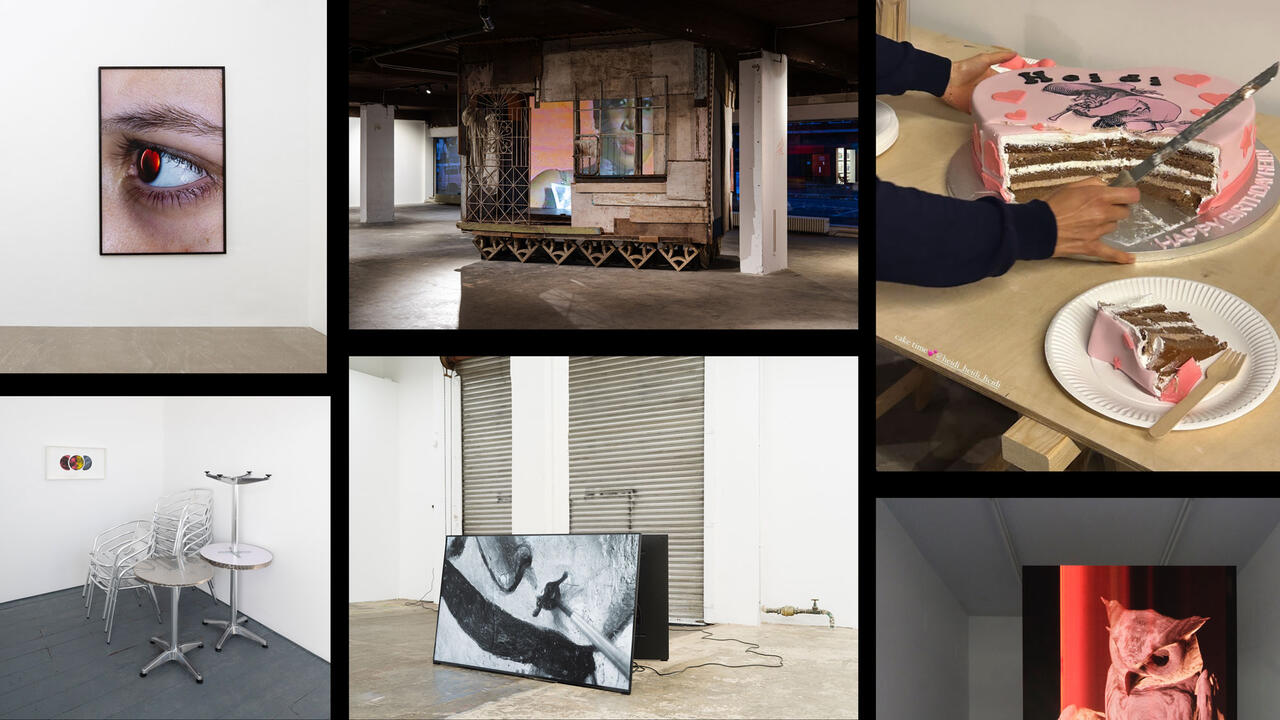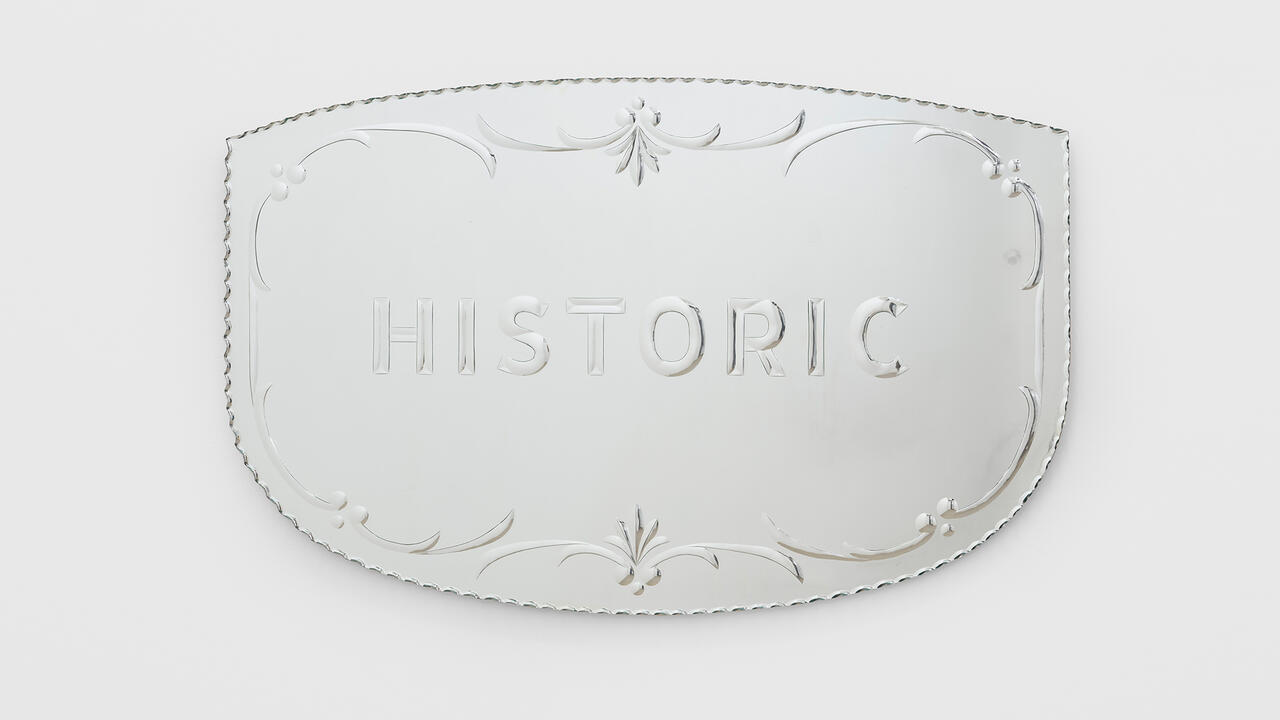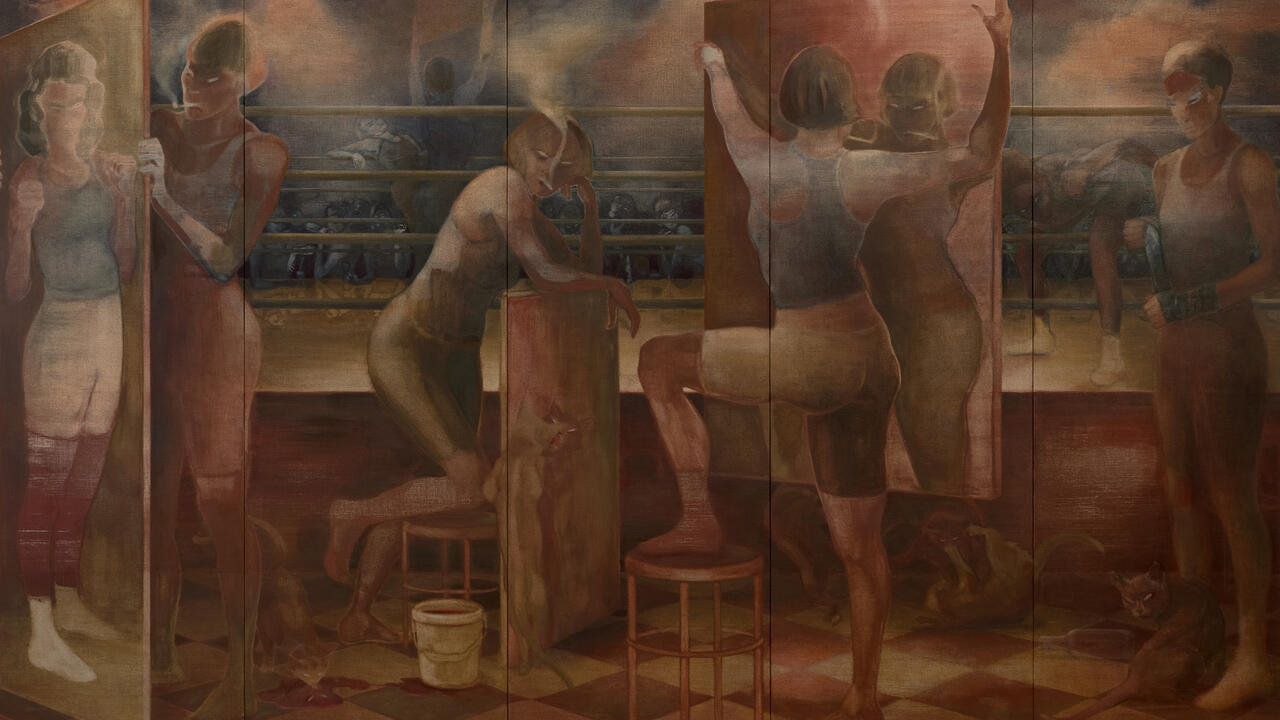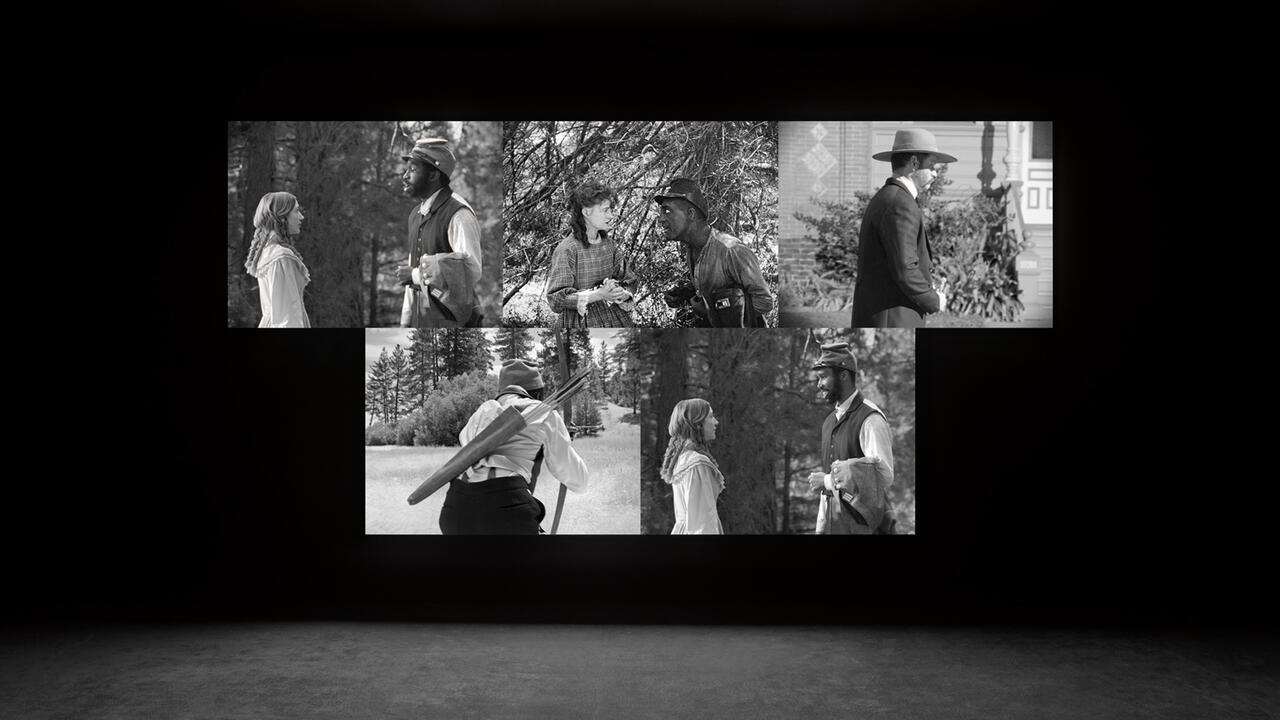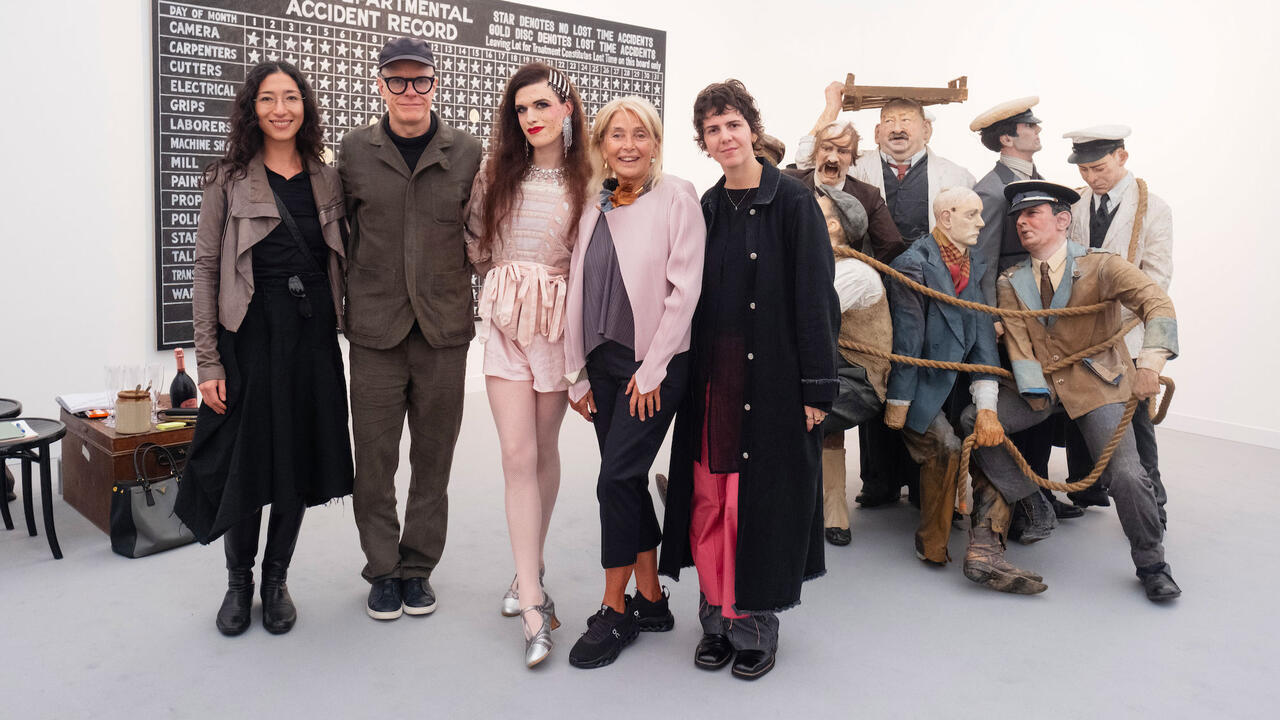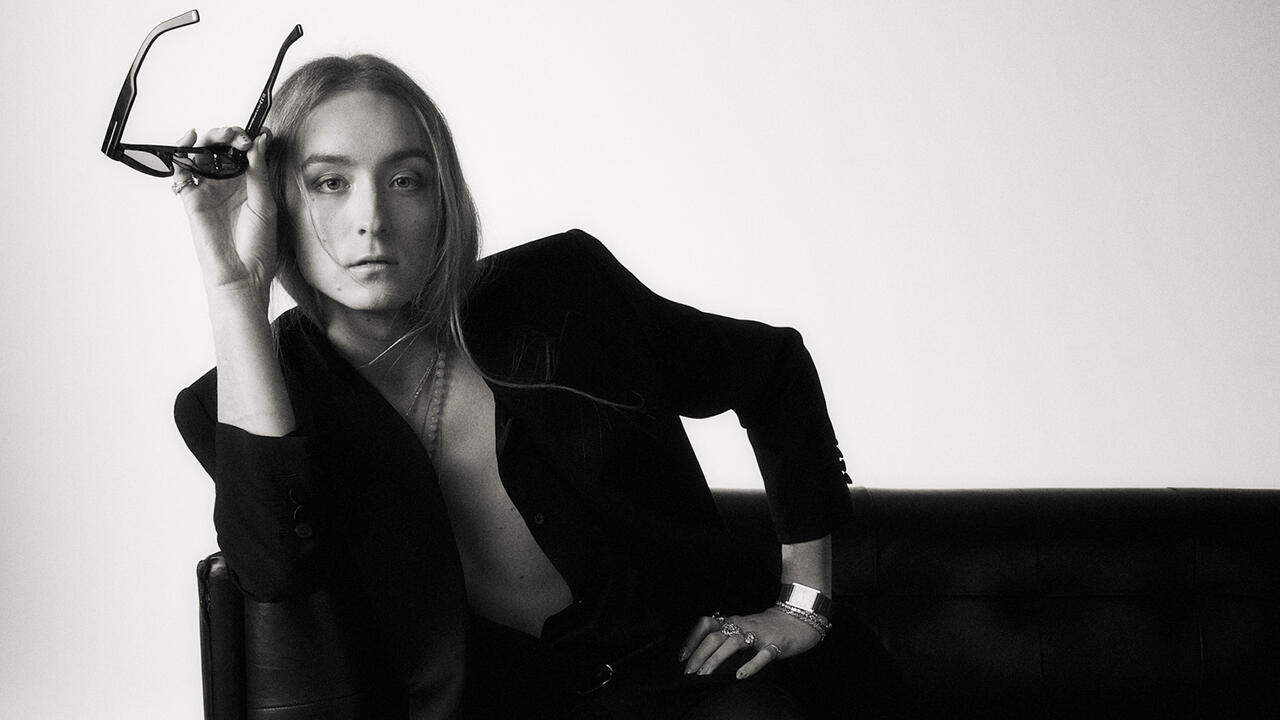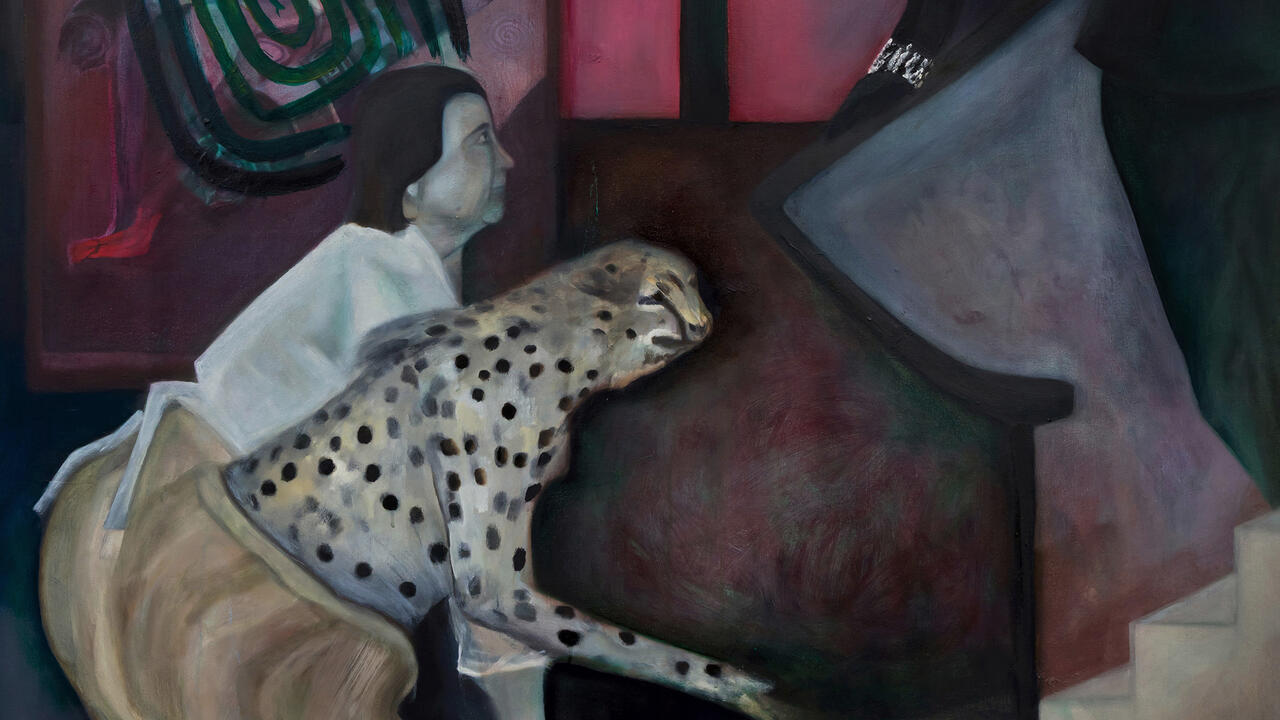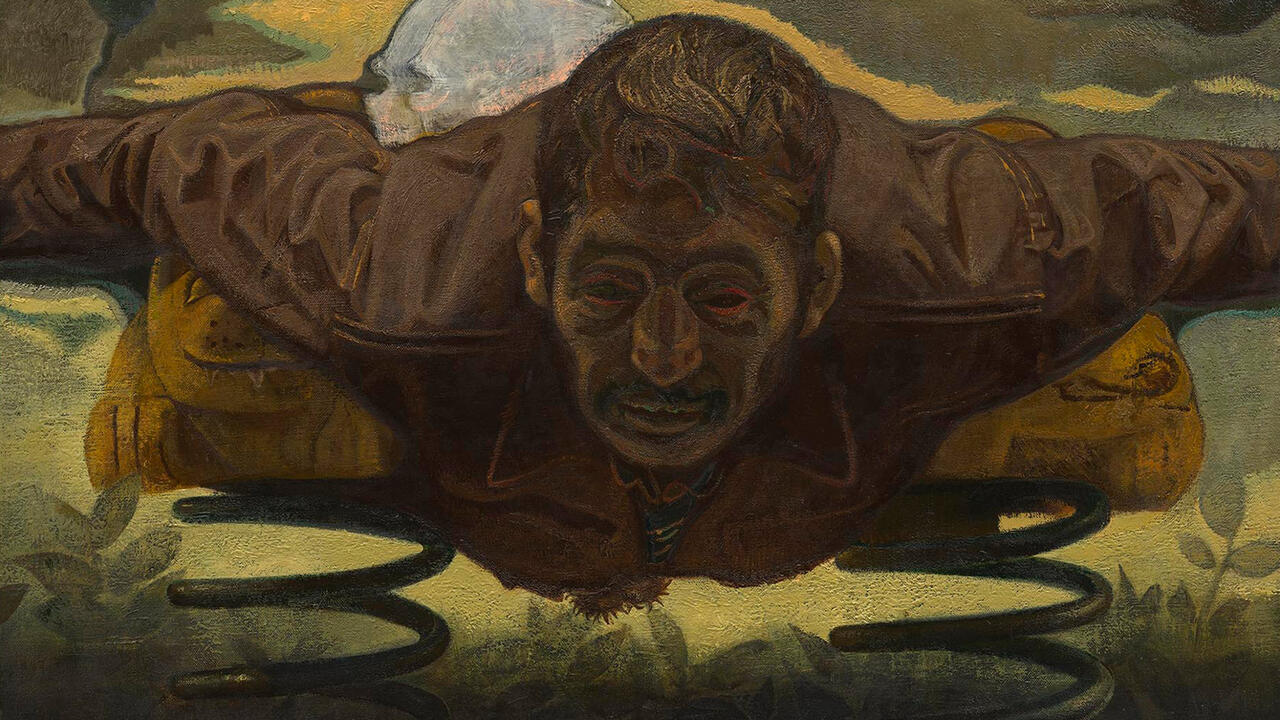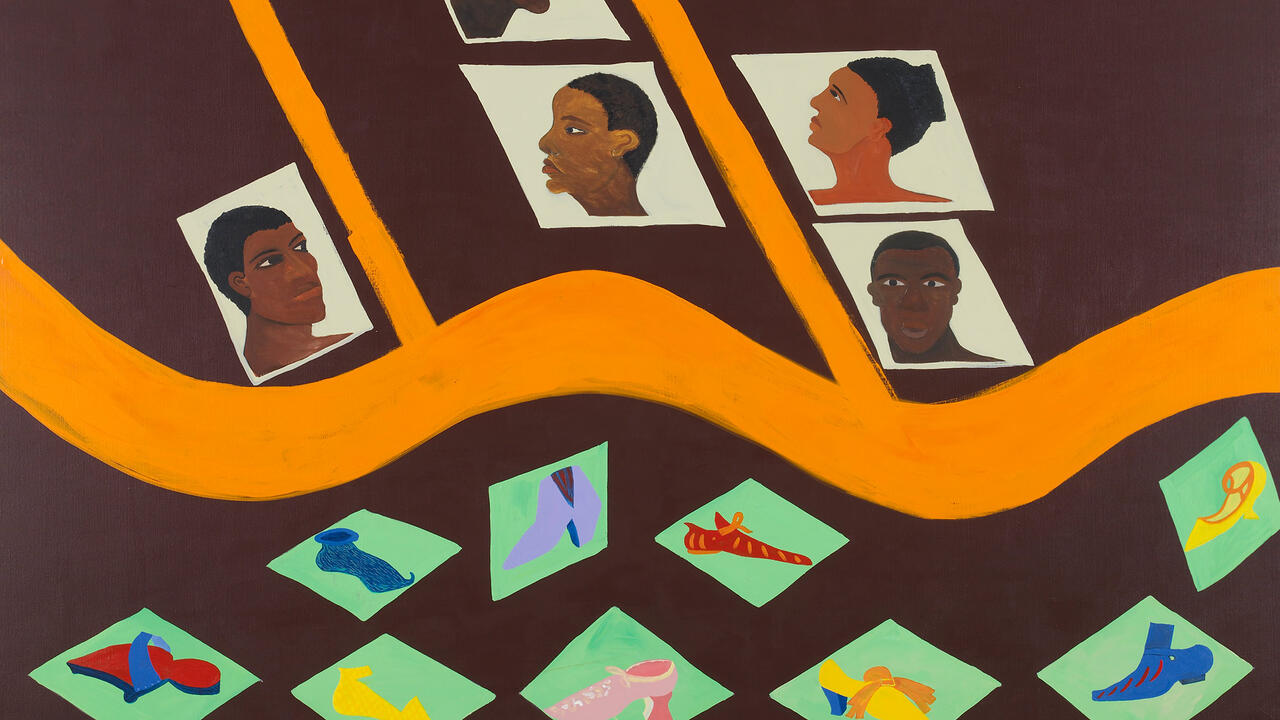Seated Man
Carl Freedman Gallery, London, UK
Carl Freedman Gallery, London, UK

There is a painting from 1787 by Johann Heinrich Wilhelm Tischbein depicting Johann Wolfgang von Goethe sitting on a rock before the ruins of Rome. The solitary figure is perhaps only temporarily in repose: with one leg raised above the ground, it seems likely that he will soon stand up and start off once again. Tischbein’s subject – in fact an imagined pose culled from composite sketches during the pair’s travels through Italy – is impetuously seated, somehow unsure of his position. In this sense, it is remarkable that Goethe was himself responsible for the similarly uncertain ‘seated man’ of literature – a hesitant, searching and not-yet industrious young protagonist – as embodied by Young Werther and his anguish.
Recurring as often in the Bildungsroman as in painting (see also Egon Schiele, Willem de Kooning, Alberto Giacometti, and so on), the Seated Man is a familiar figure. However it was the particular tension in representing man – seated for only a moment – with which this exhibition, curated by Carl Freedman, sought to engage. But, from a conceptual standpoint, who exactly is this character? After Goethe and the French Romantics, he is a contradictory figure of privilege and desolation, observant, concerned and ever ready to indulge in contemplation, most often in the setting of the natural environment. Tischbein did say, after all, that he wanted to show Goethe pondering the fate of the works of man.
Thilo Heinzmann’s considered studies of this abstract figure in repose are, in comparison, playfully minimalist. Liegende (Reclined, 2010), an abstract composition of marble and wood blocks on white aluminum, mimics rather remarkably Tischbein’s figure in repose (or, for that matter, any other art historical recline), whereas the dynamism implied by Mann aus dem Wasser Steigend (Man Climbing Out of the Water, 2010) is even scanter in collaged sculptural materials – though its tighter formation communicates a great potential for motion. Installed at the entrance to the gallery, Heinze (2009) evokes a pastoral motif: native to the fields of Southern Germany and dating from the Thirty Years’ War, it is a flexible wooden structure used for drying hay. Cast in epoxy resin and coloured inside and out in ethereal pastels, the spiky, tree-like structure retains a waxy, almost primitive presence.
Peter Peri’s constructivist Seated Man Sculpture 2 (2010) is also cast from functional objects, if more contemporary ones – the ‘head’ of his assemblage takes its form from a roll of masking tape. Reading at the Wall (2010), from Peri’s recent silver paintings, is far less figurative: background layers of foil-like paint here and there crackle through a pale surface of blue and pink, resulting in a messy, enigmatic texture at odds with the angular precision of his composition.
Catherine Story’s Player (2010) takes a more whimsical approach: in characteristically muted beiges and whites, an anthropomorphic cloth slip, with no man inside, intimates a feeling of light wind with its shaded folds. Player suitably complements Fergal Stapleton’s large-scale, sombre history painting Or (2010), in which barely perceptible forms are cloaked in rusty darkness. David Smith’s Great Expectations (2010) is the only picture to portray a man, dreamily alone among his sheep. A landscape painting of fluorescent neons washed over black-over-painted herringbone canvas, Smith merges fore and background in quilted pointillism that vaguely suggests agricultural patterns.
As a group, Heinzmann, Peri, Smith, Stapleton and Story – most of whom shift between painting and sculpture – are something like latter-day minimalists, from a figurative stance rather than an ideological one. Working from and with objects and subjects of different types, without ever fully abandoning form for pure abstraction, the new pictures and sculpture shown in ‘Seated Man’ reflect what might too-easily be called a ‘contemplative’ posture. That the artists refuse to overpower the viewer is quietly refreshing; that they do not lack wit, texture or complexity is reason for pause. A brief moment to look, to think – to sit – before moving on.









